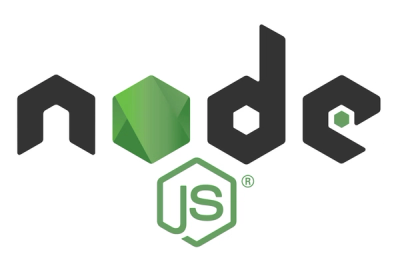
Security News
ECMAScript 2025 Finalized with Iterator Helpers, Set Methods, RegExp.escape, and More
ECMAScript 2025 introduces Iterator Helpers, Set methods, JSON modules, and more in its latest spec update approved by Ecma in June 2025.
github.com/gilcrest/httplog
!!!!WARNING!!!! - This package works, but is something I wrote a long time ago and really needs to be updated. I logged Issue #8 to some day address this.
go get -u github.com/gilcrest/httplog
https://pkg.go.dev/github.com/gilcrest/httplog
httplog has two external libraries that it depends on, listed below.
If you plan to use the Database Logging feature of httplog, you will need to extract the httplogDDL.sql file included in the workspace and run this on your own PostgreSQL database. This script is pretty raw right now and will be made better if there is interest.
httplog logs http requests and responses. It’s highly configurable, e.g. in production, log all response and requests, but don’t log the body or headers, in your dev environment log everything and so on. httplog also has different ways to log depending on your preference — structured logging via JSON, relational database logging or just plain standard library logging.
httplog has logic to turn on/off logging based on options you can either pass in to the middleware handler or from a JSON input file included with the library.
httplog offers three middleware choices, each of which adhere to fairly common middleware patterns: a simple HandlerFunc (LogHandlerFunc), a function (LogHandler) which takes a handler and returns a handler (often used with alice) and finally, a function (LogAdapter), which returns an Adapter type (based on Mat Ryer’s post). An httplog.Adapt function and httplog.Adapter type are provided for the latter.
Beyond logging request and response elements, httplog creates a unique id for each incoming request (using xid) and sets it (and a few other key request elements) into the request context. You can access these context items using provided helper functions, including a function that returns an httplog.Audit struct which bundles all these items for response payloads to provide clients with helpful information for support.
Each middleware takes a minimum of three parameters:
log - an instance of zerolog.logger
db - a pointer to a sql database (PostgreSQL)
o - an httplog.Opts struct which has the all of the logging configurations
httpLogOpt.json filehttpLogOpt.json file, simply initialize the httplog.Opts struct and all values are set to false (the whole struct is boolean flags and in Go, a boolean's zero value is false). You can then pick and choose which flags to turn on via code.The below examples are taken from go-API-template. It uses all three httplog middlewares for example sake. You obviously would choose 1 pattern and stick to that (for the most part).
package app
import (
"github.com/gilcrest/go-API-template/datastore"
"github.com/gilcrest/httplog"
"github.com/justinas/alice"
)
// routes registers handlers to the router
func (s *server) routes() error {
// Get a logger instance from the server struct
log := s.logger
// Get pointer to logging database to pass into httplog
// Only need this if you plan to use the PostgreSQL
// logging style of httplog
logdb, err := s.ds.DB(datastore.LogDB)
if err != nil {
return err
}
// httplog.NewOpts gets a new httplog.Opts struct
// (with all flags set to false)
opts := httplog.NewOpts()
// For the examples below, I chose to turn on db logging only
// Log the request headers only (body has password on this api!)
// Log both the response headers and body
opts.Log2DB.Enable = true
opts.Log2DB.Request.Header = true
opts.Log2DB.Response.Header = true
opts.Log2DB.Response.Body = true
// HandlerFunc middleware example
// function takes an http.HandlerFunc and returns an http.HandlerFunc
// Also, match only POST requests with Content-Type header = application/json
s.router.HandleFunc("/v1/handlefunc/user",
httplog.LogHandlerFunc(s.handleUserCreate(), log, logdb, opts)).
Methods("POST").
Headers("Content-Type", "application/json")
// function (`LogHandler`) that takes a handler and returns a handler (aka Constructor)
// (`func (http.Handler) http.Handler`) - used with alice
// Also, match only POST requests with Content-Type header = application/json
s.router.Handle("/v1/alice/user",
alice.New(httplog.LogHandler(log, logdb, opts)).
ThenFunc(s.handleUserCreate())).
Methods("POST").
Headers("Content-Type", "application/json")
// Adapter Type middleware example
// Also, match only POST requests with Content-Type header = application/json
s.router.Handle("/v1/adapter/user",
httplog.Adapt(s.handleUserCreate(),
httplog.LogAdapter(log, logdb, opts))).
Methods("POST").
Headers("Content-Type", "application/json")
return nil
}
The boolean fields found within the Opts struct type drive the rules for what logging features are turned on. You can have one to three log styles turned on using this file (or none, if you so choose). Below are all the boolean options in the struct.
Note: Right now, this struct for options serves its purpose and is pretty simple. I have read Dave Cheney's great post on Functional Options for Friendly APIs and it's great - I may switch to this style later.
// Log2StdOut
opts.Log2StdOut.Request.Enable
opts.Log2StdOut.Request.Options.Header
opts.Log2StdOut.Request.Options.Body
opts.Log2StdOut.Response.Enable
opts.Log2StdOut.Response.Options.Header
opts.Log2StdOut.Response.Options.Body
// Log2DB
opts.Log2DB.Enable
opts.Log2DB.Request.Header
opts.Log2DB.Request.Body
opts.Log2DB.Response.Header
opts.Log2DB.Response.Body
// DumpRequest
opts.HTTPUtil.DumpRequest.Body
opts.HTTPUtil.DumpRequest.Body
Opts struct when using one of the given middleware functions. httplog.NewOpts will return an Opts struct with all logging turned off. You can then set whichever logging style and option you like.httpLogOpt.json file found in the root of the httplog library into the Opts struct type. You can change log configuration by altering the boolean values present in this file.Set log_json.Request.enable in the HTTP Log Config File or opts.Log2StdOut.Request.Enable to true in the httplog.Opts struct to enable http request logging as JSON (so long as you have properly "chained" the middleware). The output for a request looks something like:
{"time":1517970302,"level":"info","request_id":"b9t66vma6806ln8iak8g","header_json":"{\"Accept\":[\"*/*\"],\"Accept-Encoding\":[\"gzip, deflate\"],\"Cache-Control\":[\"no-cache\"],\"Connection\":[\"keep-alive\"],\"Content-Length\":[\"129\"],\"Content-Type\":[\"application/json\"],\"Postman-Token\":[\"9949f5e5-b406-4e22-aff3-ab6ba6e7d841\"],\"User-Agent\":[\"PostmanRuntime/7.1.1\"]}","body":"{\"username\": \"repoMan\",\"mobile_ID\": \"1-800-repoman\",\"email\":\"repoman@alwaysintense.com\",\"First_Name\":\"Otto\",\"Last_Name\":\"Maddox\"}","method":"POST","scheme":"http","host":"127.0.0.1","port":"8080","path":"/api/v1/appuser","protocol":"HTTP/1.1","proto_major":1,"proto_minor":1,"Content Length":129,"Transfer-Encoding":"","Close":false,"RemoteAddr":"127.0.0.1:58689","RequestURI":"/api/v1/appuser","message":"Request received"}
NOTE - the HTTP header key:value pairs and json from the body are represented as escaped JSON within the actual message. If you don't want this data, set these fields to false in the JSON config file or
httplog.Optsstruct.
Set log_json.Response.enable in the HTTP Log Config File or opts.Log2StdOut.Response.Enable to true to enable http response logging as JSON. The response output will look something like:
{"time":1517970302,"level":"info","request_id":"b9t66vma6806ln8iak8g","response_code":200,"response_header":"{\"Content-Type\":[\"text/plain; charset=utf-8\"],\"Request-Id\":[\"b9t66vma6806ln8iak8g\"]}","response_body":"{\"username\":\"repoMan\",\"mobile_id\":\"1-800-repoman\",\"email\":\"repoman@alwaysintense.com\",\"first_name\":\"Otto\",\"last_name\":\"Maddox\",\"create_user_id\":\"gilcrest\",\"create_date\":\"2018-02-06T21:25:02.538322Z\",\"update_user_id\":\"\",\"update_date\":\"0001-01-01T00:00:00Z\"}\n{\"username\":\"repoMan\",\"mobile_id\":\"1-800-repoman\",\"email\":\"repoman@alwaysintense.com\",\"first_name\":\"Otto\",\"last_name\":\"Maddox\",\"create_user_id\":\"gilcrest\",\"create_date\":\"2018-02-06T21:25:02.538322Z\",\"update_user_id\":\"\",\"update_date\":\"0001-01-01T00:00:00Z\"}\n","message":"Response Sent"}
NOTE - same as request - the HTTP header key:value pairs and json from the body are represented as escaped JSON within the actual message. If you don't want this data, set these fields to false in the JSON config file (
httpLogOpt.json) orhttplog.Optsstruct.
Set log_2DB.enable to true in the HTTP Log Config File to enable Database logging to a PostgreSQL database. The DDL is provided within the ddl directory (httplogDDL.sql) and consists of one table and one stored function. Once enabled, Request and Response information will be logged as one transaction to the database. You can optionally choose to log request and response headers using the Options fields within the HTTP Log Config File or httplog.Opts struct.

In total 20 fields are logged as part of the database transaction.
| Column Name | Datatype | Description |
|---|---|---|
| request_id | VARCHAR(100) | Unique Request ID |
| client_id | VARCHAR(100) | API Client ID |
| request_timestamp | TIMESTAMP | UTC time request received |
| response_code | INTEGER | HTTP Response Code |
| response_timestamp | TIMESTAMP | UTC time response sent |
| duration_in_millis | BIGINT | Response time duration in milliseconds |
| protocol | VARCHAR(20) | HTTP protocol version, e.g. HTTP/1.1 |
| protocol_major | INTEGER | HTTP protocol major version |
| protocol_minor | INTEGER | HTTP protocol minor version |
| request_method | VARCHAR(10) | HTTP method (GET, POST, PUT, etc.) |
| scheme | VARCHAR(100) | URL scheme (http, https, etc.) |
| host | VARCHAR(100) | URL host |
| port | VARCHAR(100) | URL port |
| path | VARCHAR(4000) | URL path |
| remote_address | VARCHAR(100) | Network address which sent request |
| request_content_length | BIGINT | Request content length |
| request_header | JSONB | Key:Value pairs from HTTP request in JSON format |
| request_body | TEXT | Request body content |
| response_header | JSONB | Key:Value pairs from HTTP response in JSON format |
| response_body | TEXT | Response body content |
Set httputil.DumpRequest.enable in the HTTP Log Config File or opts.HTTPUtil.DumpRequest.Enable in httplog.Opts to true to enable logging the request via the httputil.DumpRequest method. Nothing special here, really - just providing an easy way to turn this on or off. Output typically looks like:
httputil.DumpRequest output:
POST /api/v1/appuser HTTP/1.1
Host: 127.0.0.1:8080
Accept: */*
Accept-Encoding: gzip, deflate
Cache-Control: no-cache
Connection: keep-alive
Content-Length: 129
Content-Type: application/json
Postman-Token: 6d1b2461-59e2-4c87-baf5-d8e64a93c55b
User-Agent: PostmanRuntime/7.1.1
{"username": "repoMan","mobile_ID": "1-800-repoman","email":"repoman@alwaysintense.com","First_Name":"Otto","Last_Name":"Maddox"}
NOTE - in order to log the body, set
httputil.DumpRequest.bodyinhttplogOpt.jsonoropts.HTTPUtil.DumpRequest.Enableinhttplog.Optsto true. If you don't want this data, set the appropriate field to false in the JSON config file (httpLogOpt.json) orhttplog.Optsstruct (depending on which method you chose).
httplog middleware creates a unique ID to track each request. In addition, it adds several request elements to the request context that can be accessed with helper functions later.
Each request is given a 20 character Unique Request ID generated by xid. This unique ID is populated throughout each log type for easy tracking. This ID is also meant to be sent back to the client of your API either in the response header or response body (see below for further help on including httplog context items in a response body).
In addition to the generated Unique ID, httplog also adds the following request elements to the context:
In order to retrieve particular key:value pairs from the request context, the following helper functions are provided:
// RequestID gets the Request ID from the context.
func RequestID(ctx context.Context) string {
// RequestHost gets the request host from the context
func RequestHost(ctx context.Context) string {
// RequestPort gets the request port from the context
func RequestPort(ctx context.Context) string {
// RequestPath gets the request URL from the context
func RequestPath(ctx context.Context) string {
// RequestRawQuery gets the request Query string details from the context
func RequestRawQuery(ctx context.Context) string {
// RequestFragment gets the request Fragment details from the context
func RequestFragment(ctx context.Context) string {
Some APIs may find it helpful to echo back certain request elements or helpful contextual information in the response payload. httplog provides httplog.Audit for just this purpose. Use constructor function httplog.NewAudit to initialize this struct. The unique Request ID will always be sent back as part of the struct -- the other request elements are optional and can be turned on/off using the httplog.AuditOpts config struct. Below is a sample response with the audit struct included to give an idea of how it can be used. The example below is from the go-API-template repository which has examples of this audit struct in use.
{
"username": "15",
"mobile_id": "1-800-repoman",
"email": "repoman@alwaysintense.com",
"first_name": "Otto",
"last_name": "Maddox",
"update_user_id": "chillcrest",
"created": 1539138260,
"audit": {
"id": "beum5l708qml02e3hvag",
"url": {
"host": "127.0.0.1",
"port": "8080",
"path": "/api/v1/adapter/user",
"query": "qskey1=fake&qskey2=test"
}
}
}
A snippet from the handleUserCreate handler function within go-API-template shows how to setup the AuditOpts struct and turn on a few options as well as plugging httplog.Audit into the response.
// create new AuditOpts struct and set options to true that you
// want to see in the response body (Request ID is always present)
aopt := new(httplog.AuditOpts)
aopt.Host = true
aopt.Port = true
aopt.Path = true
aopt.Query = true
// get a new httplog.Audit struct from NewAudit using the
// above set options and request context
aud, err := httplog.NewAudit(ctx, aopt)
if err != nil {
err = HTTPErr{
Code: http.StatusInternalServerError,
Kind: errs.Other,
Err: err,
}
httpError(w, err)
return
}
// create a new response struct and set Audit and other
// relevant elements
resp := new(response)
resp.Audit = aud
resp.Username = usr.Username()
resp.MobileID = usr.MobileID()
resp.Email = usr.Email()
resp.FirstName = usr.FirstName()
resp.LastName = usr.LastName()
resp.UpdateUserID = usr.UpdateUserID()
resp.UpdateUnixTime = usr.UpdateTimestamp().Unix()
// Encode response struct to JSON for the response body
json.NewEncoder(w).Encode(*resp)
websites/youtube
Books
Blog/Medium Posts
FAQs
Unknown package
Did you know?

Socket for GitHub automatically highlights issues in each pull request and monitors the health of all your open source dependencies. Discover the contents of your packages and block harmful activity before you install or update your dependencies.

Security News
ECMAScript 2025 introduces Iterator Helpers, Set methods, JSON modules, and more in its latest spec update approved by Ecma in June 2025.

Security News
A new Node.js homepage button linking to paid support for EOL versions has sparked a heated discussion among contributors and the wider community.

Research
North Korean threat actors linked to the Contagious Interview campaign return with 35 new malicious npm packages using a stealthy multi-stage malware loader.